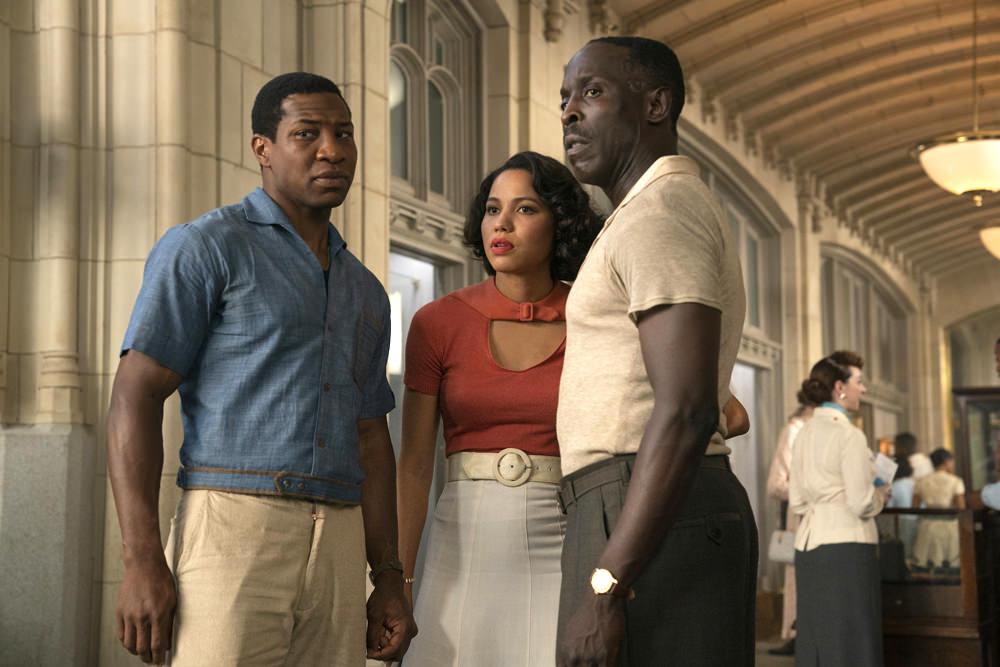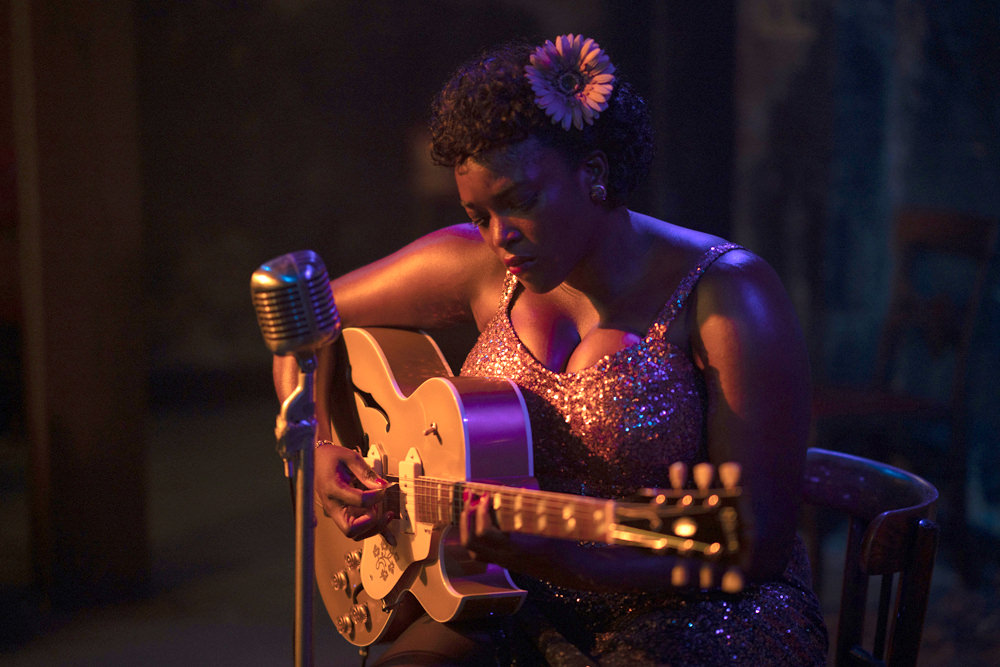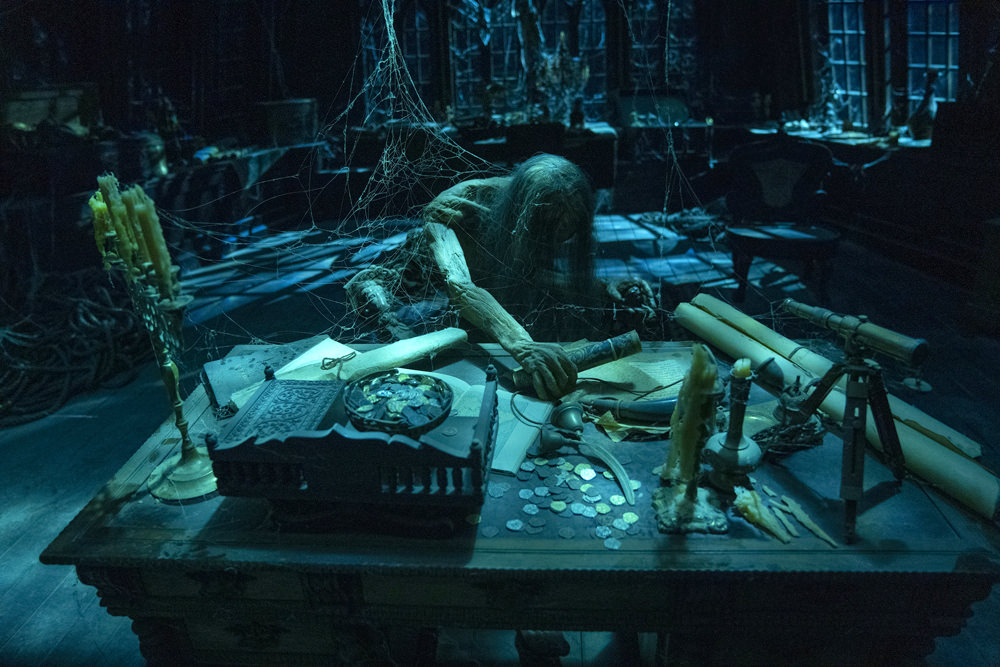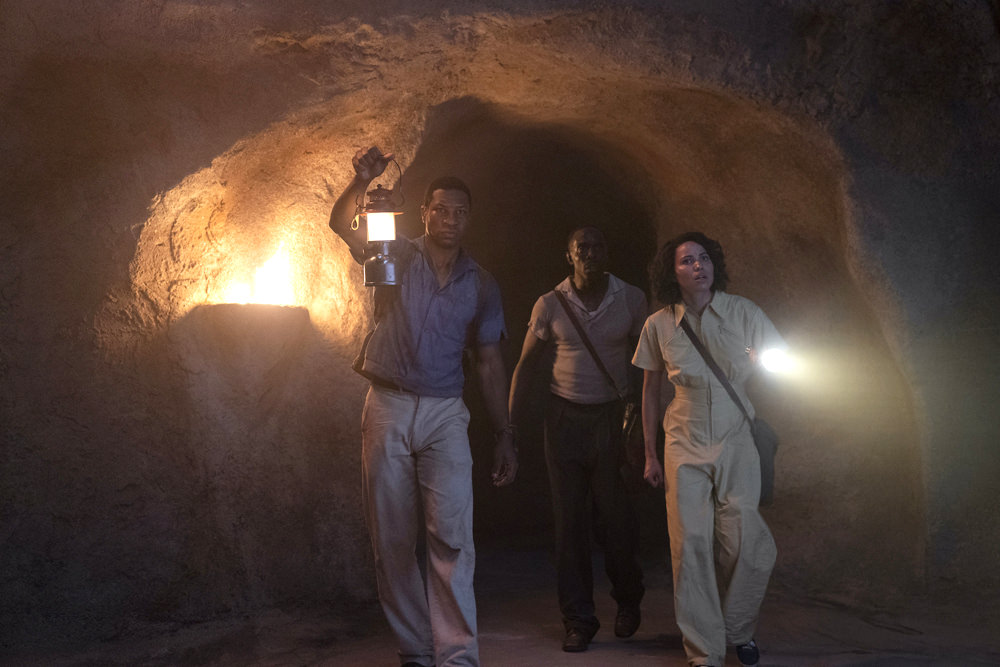 With its fourth episode, Lovecraft Country’s structure, style and themes become more evident and locked into place, which is both a good thing and a thing that’s … not necessarily bad, but may turn out to be disappointing. When the show is diving deep into the genre waters and serves up a classic storytelling trope in an obvious manner (“cabin in the woods,” haunted house, Indiana Jones-style adventure) the show is great. When it effectively intertwines those tropes with America’s racial history and African-American culture (most effectively in the first and third episodes), it’s fantastic. With four episodes under its belt, it seems more obvious than ever that the second episode’s drop in quality stands out because that episode separated its heroes from their families and communities and didn’t fill the void left by them with a killer take on a genre classic. In “A History of Violence” we once again see our three heroes (Montrose replacing George this time) isolated and fighting for their lives far from any discussions of racist traditions or Black culture. It seems to us that when the story takes away the opportunities to show block parties and house parties and family gatherings (not to mention all that fabulous costume design), it loses a lot of its texture.
With its fourth episode, Lovecraft Country’s structure, style and themes become more evident and locked into place, which is both a good thing and a thing that’s … not necessarily bad, but may turn out to be disappointing. When the show is diving deep into the genre waters and serves up a classic storytelling trope in an obvious manner (“cabin in the woods,” haunted house, Indiana Jones-style adventure) the show is great. When it effectively intertwines those tropes with America’s racial history and African-American culture (most effectively in the first and third episodes), it’s fantastic. With four episodes under its belt, it seems more obvious than ever that the second episode’s drop in quality stands out because that episode separated its heroes from their families and communities and didn’t fill the void left by them with a killer take on a genre classic. In “A History of Violence” we once again see our three heroes (Montrose replacing George this time) isolated and fighting for their lives far from any discussions of racist traditions or Black culture. It seems to us that when the story takes away the opportunities to show block parties and house parties and family gatherings (not to mention all that fabulous costume design), it loses a lot of its texture.
Which isn’t to say that this was a bad episode. Quite the opposite; it was extremely fun watching our heroes do a little old-school tomb raiding, completely with swinging pendulums and disintegrating planks and magic blood that opens secret doors. But it feels like the show has already established a pattern (or perhaps more on point: a rhythm); A rich episode full of costumes, music, and character-defining scenes paired with as basic a horror story as you could devise, resulting in an explosively entertaining hour arising out of the combination of Black experiences and supernatural horror, followed by a table-setting and mythology-establishing episode in which most of the cultural stuff is dialed way back and we are given a ton of information. So long as they keep the adventure/horror part of the equation as fun as it was this week, we don’t mind a lot of plotting and character information getting unloaded.

What makes this episode work – aside from the aforementioned fun adventuring – was how seamlessly it integrated this week’s adventure with the previous week’s as well as the larger story it’s telling. Christina Braithwhite immediately (after a costume change between episodes, of course) follows up last week’s showdown with Tic by going straight to Leti’s house, in a confrontation that was much more fun to watch. It seems the priestess Leti hired last week did a lasting good on the house by laying a protection spell on it strong enough to keep White Power Witch out. That’s good information to have (and follows up on Montrose’s aside last week about white people having magic “too”) and plays into the episode’s larger tale about Tic attempting to find his own access to magic in order to protect himself and his family. It remains to be seen what Christine’s larger plan entails (although it’s safe to say “power” is the main goal), but watching her attempt to play on some sort of sisterhood with Leti (in a “don’t trust these men and their power games” ploy) after seeing her attempt to wield her womanhood as having some sort of kinship with Tic’s status as a Black man (in the sense that they’re both denied power), it feels like the show is making some very subtle and extremely biting comments on the history of white women intersecting with Black civil rights and feminist struggles – i.e., they are not to be trusted.
We’re more convinced than ever that Christina and William are the same person, which makes William’s seduction of Ruby fairly alarming, since we know how untrustworthy Christina can be. She deliberately forged a split between the sisters by lying to Leti about the source of her “inheritance,” and now that Ruby’s been more or less put under her spell, we’ve got the proverbial bad feeling about this. She’s also after the orrery that Hippolyta somehow removed from Leti’s house, although she doesn’t know that Hippolyta has it and we fear what might happen to her when Christina finds out. That prospect seems more likely now that she’s apparently decided to go visit Ardham in search of some answers.

Meanwhile, it would appear that if anyone in this story really wants answers, they should be turning to Montrose, who is a man practically composed of secrets, it would seem. Leaving aside the implication this episode that he may be gay or queer in some way, Montrose seems to know everything about what Tic is seeking, given his opening scene, in which, clearly distraught by its contents, he burns the Book of Bylaws of the Sons of Adam, which George had smuggled out of the mansion in Ardham. At first we attributed his reticence to the poor status of their relationship and possibly to some trauma he doesn’t want to revisit. That’s still true so far as we can tell (Lovecraft Country is, in its largest sense, a story about Black generational trauma), but with his murder of Yahima, it seems clear that he thinks he’s doing right by Tic in some way; that whatever Tic might have accomplished with the spell pages he found will only lead to greater harm.
Still, it’s hard to sustain any sense that Yahima’s murder is going to avert disaster when so many characters seem to be barreling down that road at a rate of high speed. Literally no one in this story is safe at this point; not from violence and not from emotional harm. We can’t imagine Montrose is going to get over his actions and we can’t imagine Tic is going to take the news of them well. Just as we can’t imagine any good coming from Ruby’s dalliance with William or Hippolyta’s need for some answers. Disaster appears to be on the horizon for all of them.

As for Yahima, we were originally interested and excited (if that’s even the right word) that the show was making space to talk about the history of violence visited on Indigenous Americans in the context of its history of racism and that it was giving space to have a non-binary or two-spirit character in the tale, which seems to grow more intersectional in its scope with each episode. But it was hard not to see a few parts of Yahima’s portrayal as problematic, not least of which was their murder, given the context of anti-trans violence. Still, the title of the episode was “A History of Violence” for a reason, and as we said, the show’s larger theme entails generational trauma. Thematically, in the context of the episode, their murder made some sense, but it was definitely hard to watch. We know some criticism has been expressed regarding the main characters misgendering Yahima, but in the show’s defense, no one in 1955 had the language to casually discuss or refer to trans or non-binary people in a manner that would be considered unproblematic today. They simply wouldn’t have used “they” to refer to Yahima. But there was no good reason to have them naked for the majority of their scenes. Given the murder and misgendering, we wish that creative decision had been strongly reconsidered. Having said that, like George’s death, we don’t quite believe Yahima’s to be permanent, although that’s probably wishful thinking on our parts. We’d rather not see a portrayal of a queer man murdering a non-binary person, even if it is part of a larger examination of trauma and violence as a result of white supremacist goals and machinations.
[Photo Credit: Eli Joshua Ade/HBO]
Venice Film Festival Style File: Cate Blanchett in Triple RRR and Armani Next Post:
Venice Film Festival Style File: “Mainstream” Star Maya Hawke in Versace
Please review our Community Guidelines before posting a comment. Thank you!



